A forgotten herb with a thrilling, potent flavor like celery on steroids. Lovage might be my all-time favorite herb, and something everyone should try at least once. The hardest part is finding it. Today we'll go over everything you need to know about this incredible aromatic that deserves to be remembered.
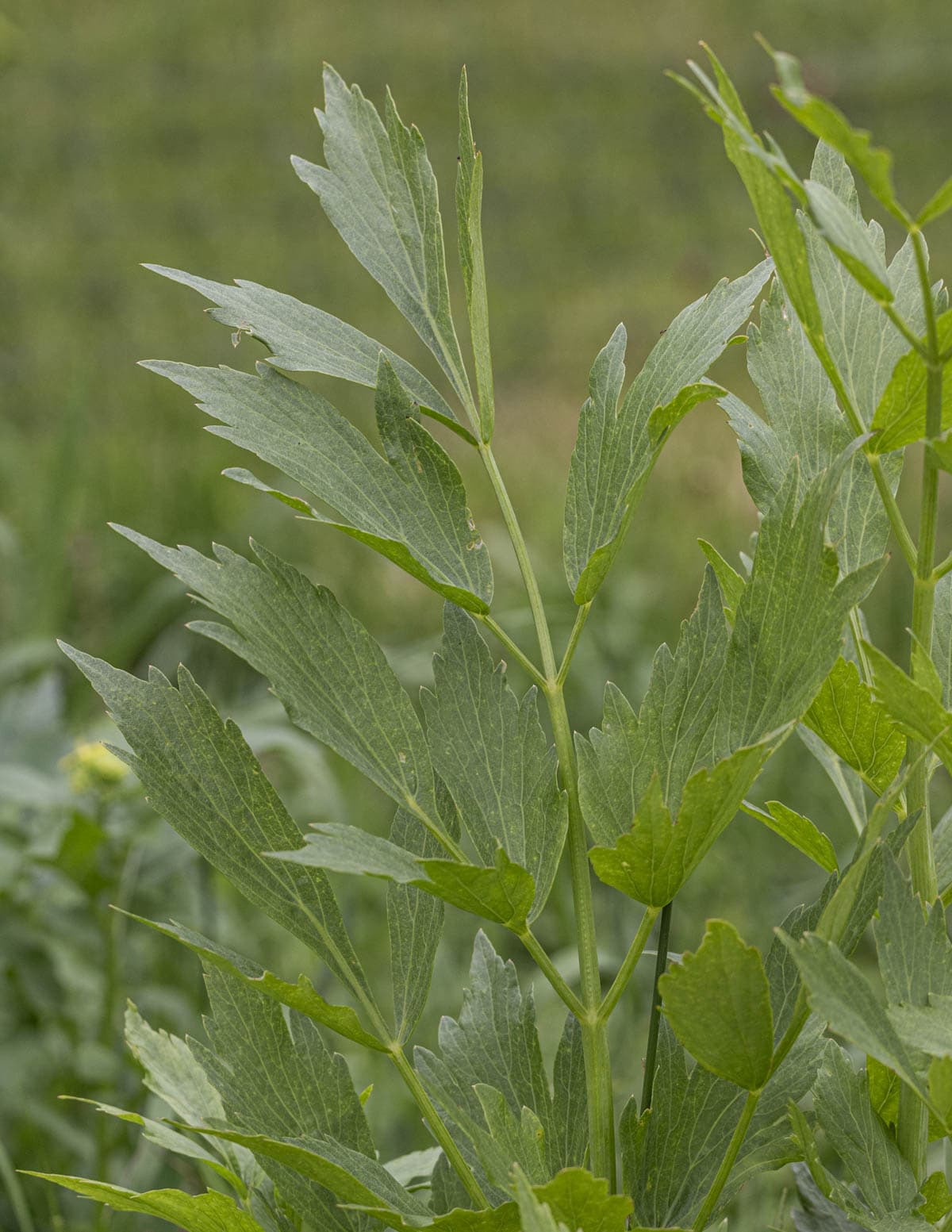
What is Lovage?
Used since ancient times as a food and medicine, lovage (Levisticum officinale) is a perennial herb in the Apiaceae family making it related to other edible plants like carrots, parsnips, celery and parsley.
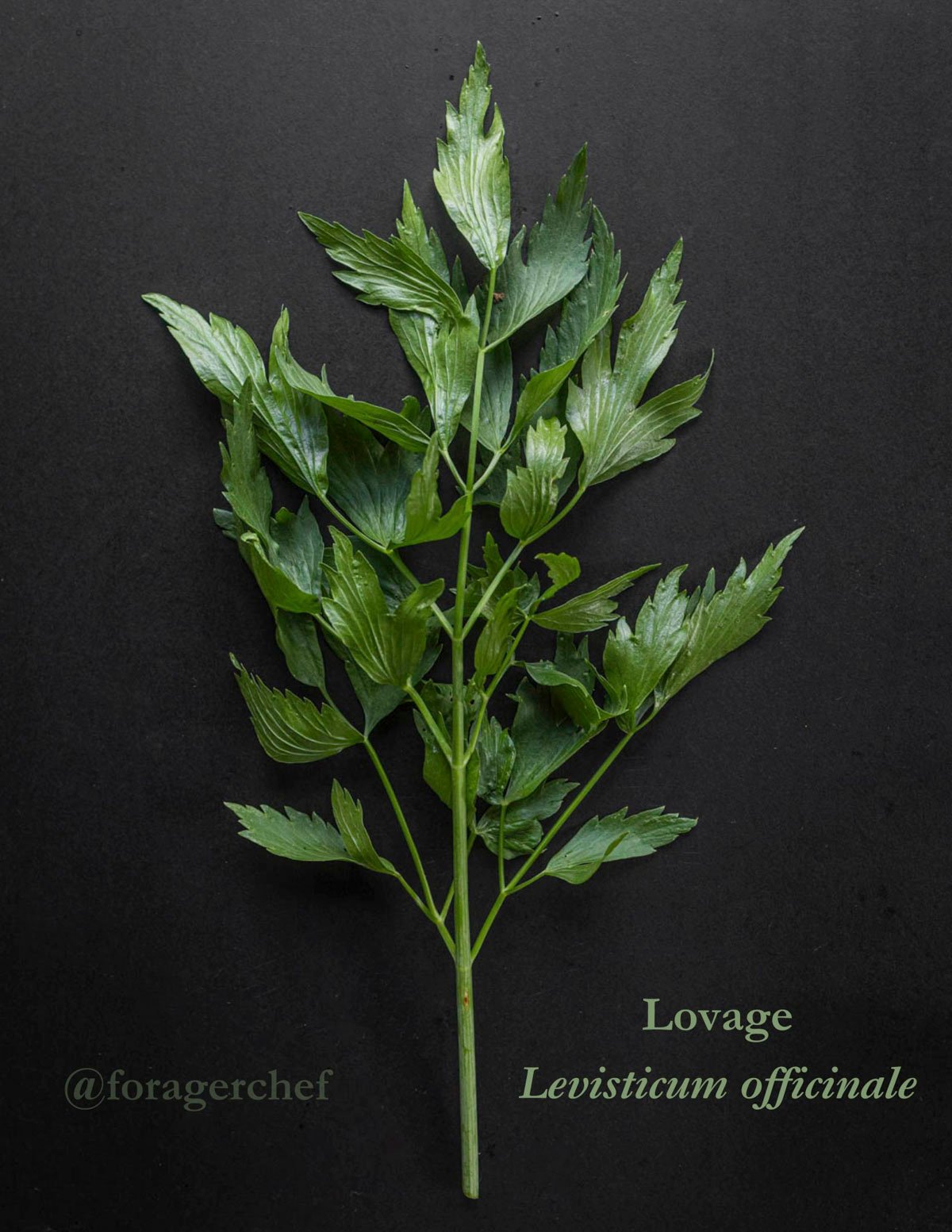
It is the only plant in the genus Levisticum, and the name can be slightly confusing as there's other plants with the same common name around the world in the genus Ligusticum like L. porteri and L. canadense.
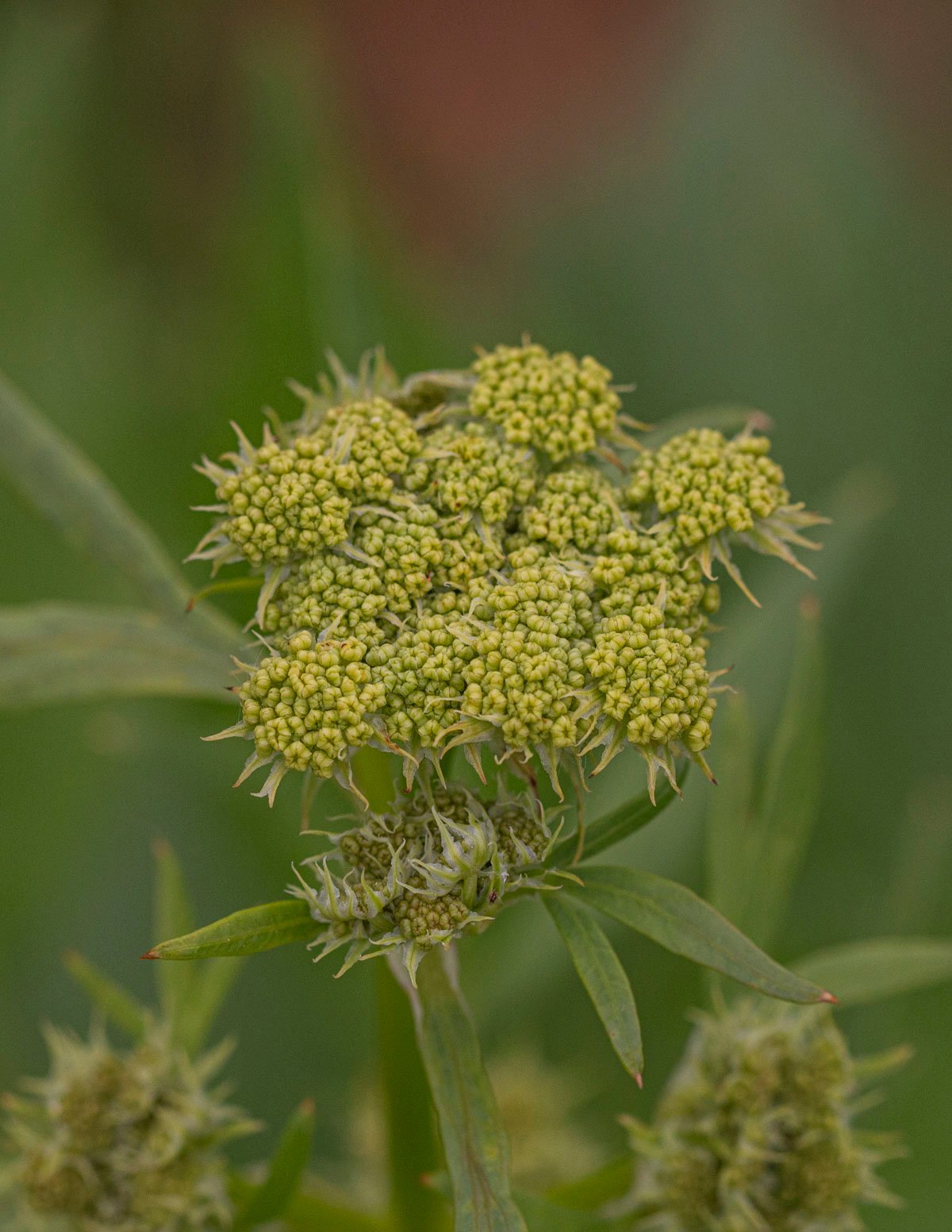
The plant has an intense flavor and aroma of celery and just a few leaves can flavor an entire dish. Used in the right place the flavor can be incredible, and using too much will make a dish taste like medicine.
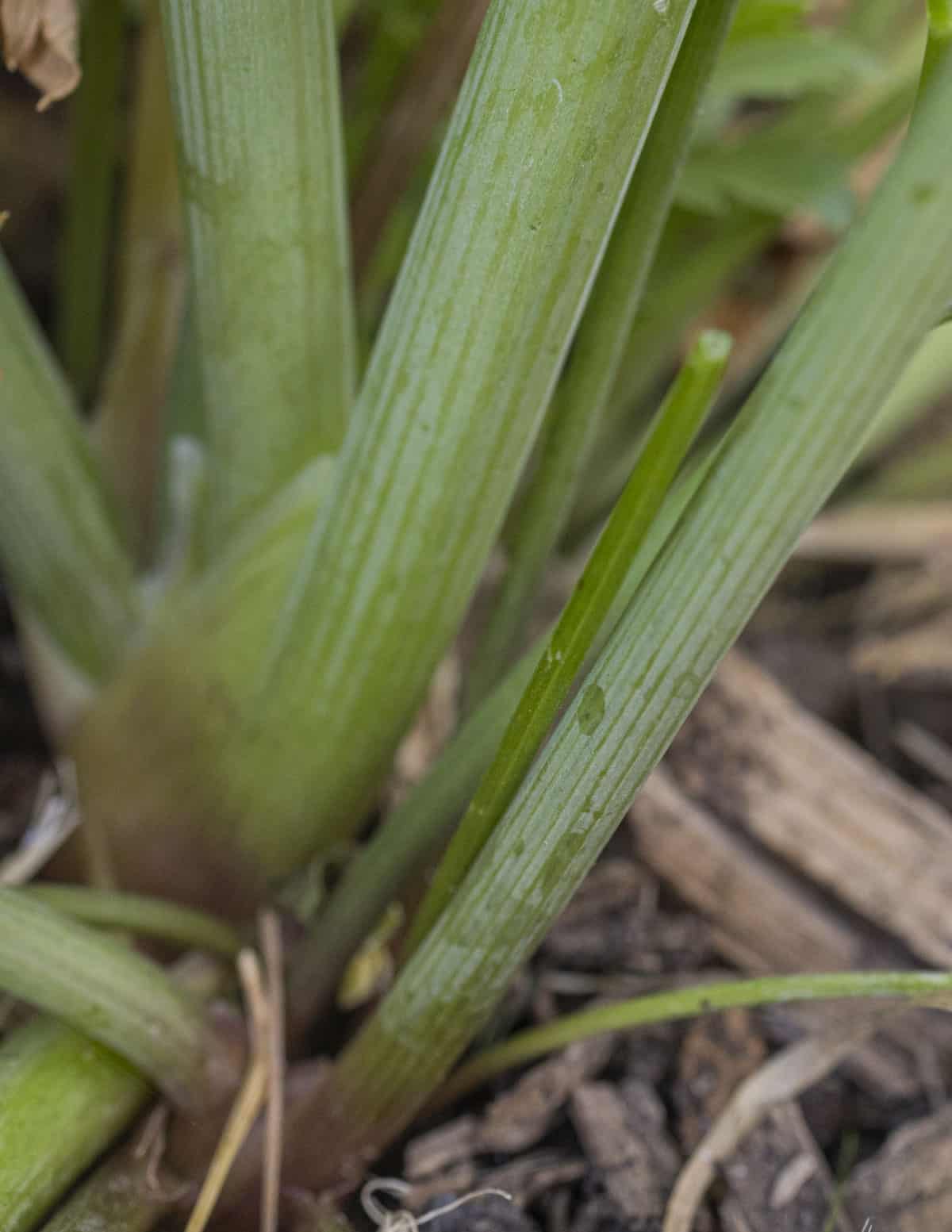
I learned about this plant from reading Apicius, the old Roman book of recipes that is one of the earliest writings on food. Humans have a long history of using every part of the plant. An essential lovage oil is also extracted from the plant, and the seeds have been used in everything from sweets to liquors.
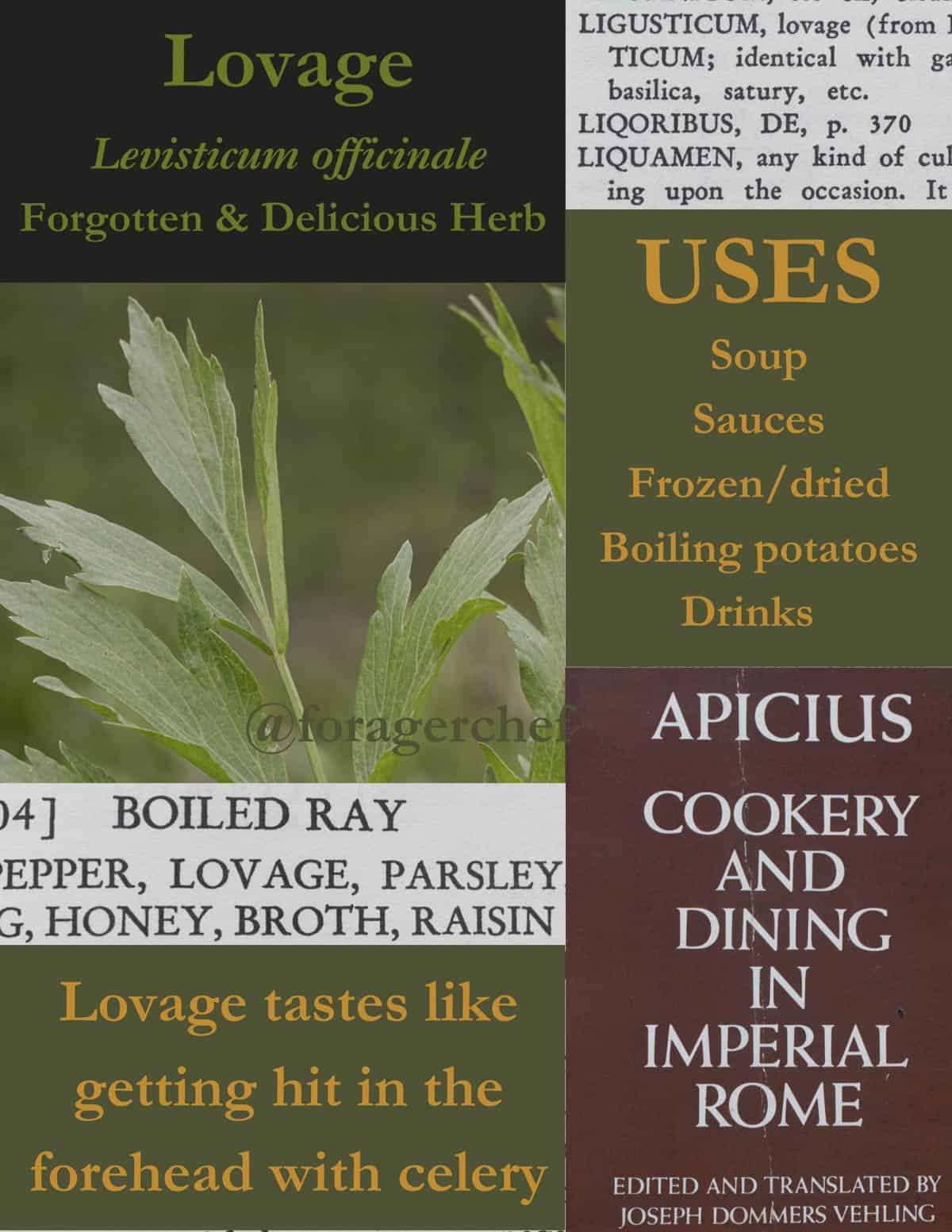
Culinary references on traditional uses of the herb are scarce and mostly from Europe. The most uses for lovage I see come from eastern Europe, especially Poland where it's known as lubczyk and often used in soup. In Romania the plant is known as leuștean and used in many recipes, typically in soup.
Growing Lovage Plants, Harvesting and Storing
The best plants I've seen are in full sun and rich soil (not sandy). I found it easy to grow from seeds, but the fastest way to get enough to cook with is to dig a plant from a friend that has an established patch. If growing from seed, I recommend planting them in the fall to give them a head start. Or you can plant the seeds when the temperature is above 60 F in the spring.
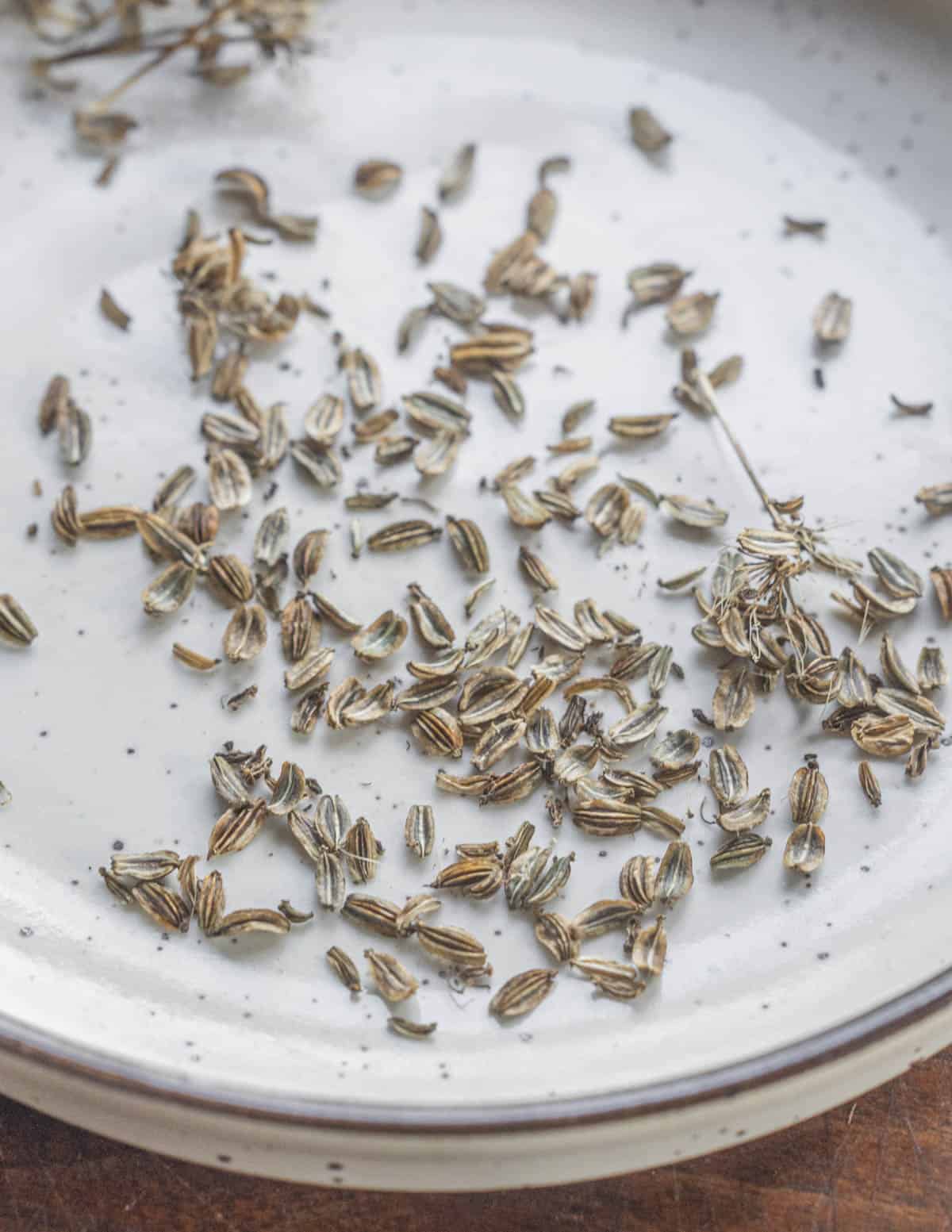
Once it's established a lovage plant will be a fixture like pokeweed or a small shrub. It is not invasive, but it will get delightfully large. In full sun it can be a vigorous grower, and the plant pictured below was nearly 7 feet tall.
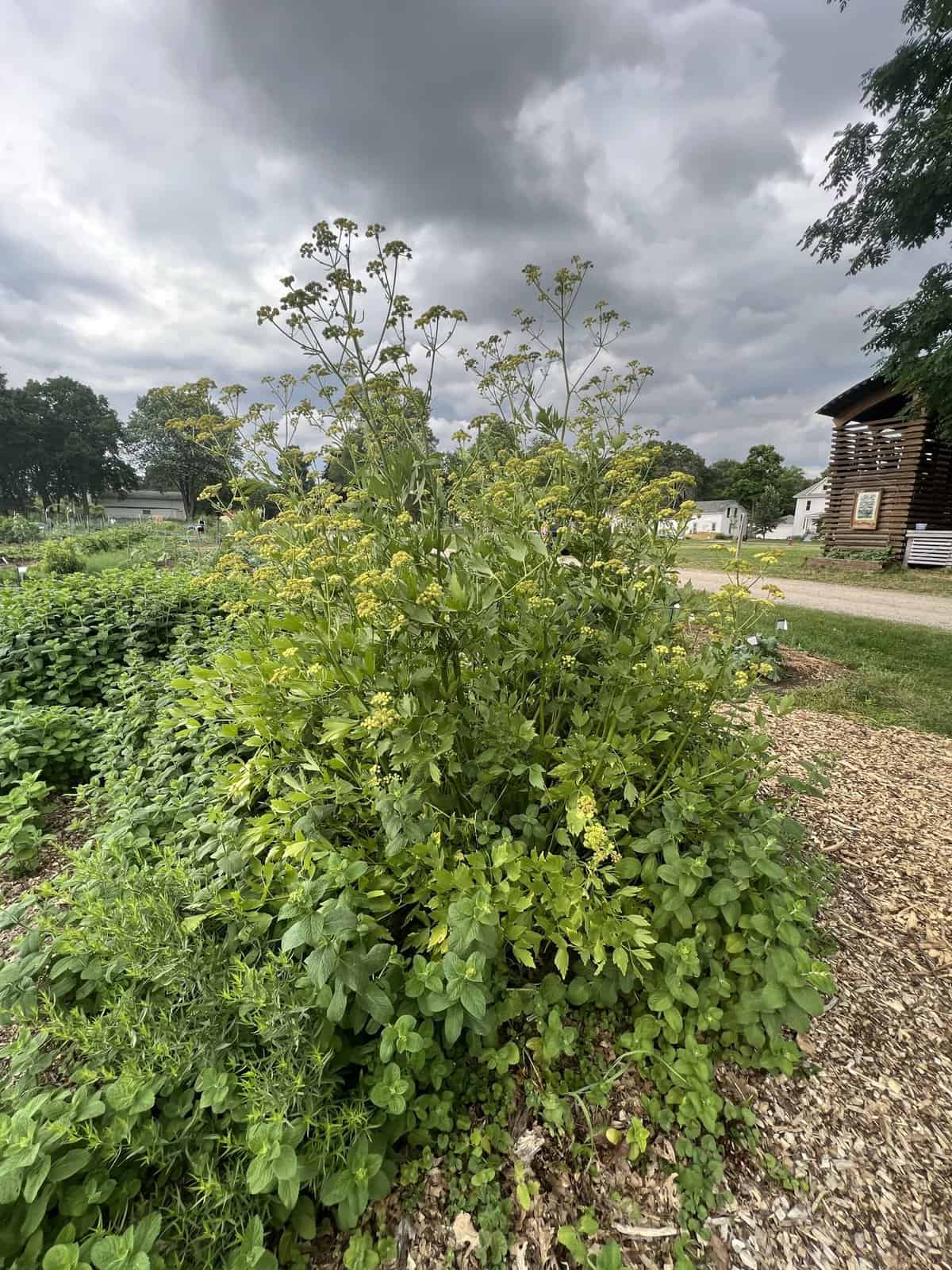
That kind of growth means it's a generous plant and you can harvest lovage greens multiple times a year like most herbs. I've cut my plants nearly to the ground and harvested fresh leaves a week later.
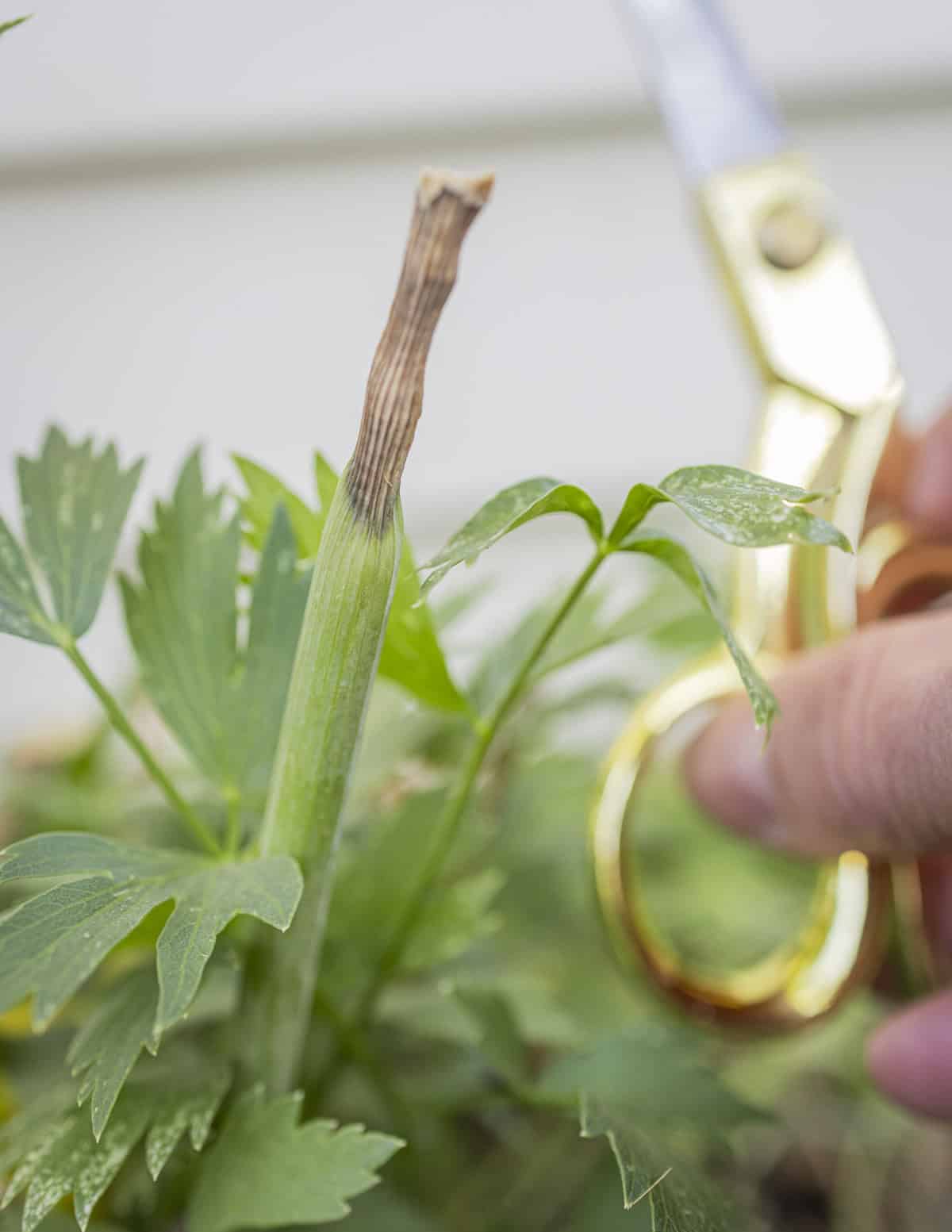
Unlike other herbs, a little goes a long way. Thankfully lovage freezes very well raw or cooked. I usually blanch the leaves and tender stems for a few seconds, refresh in cold water and portion them in zip top bags.
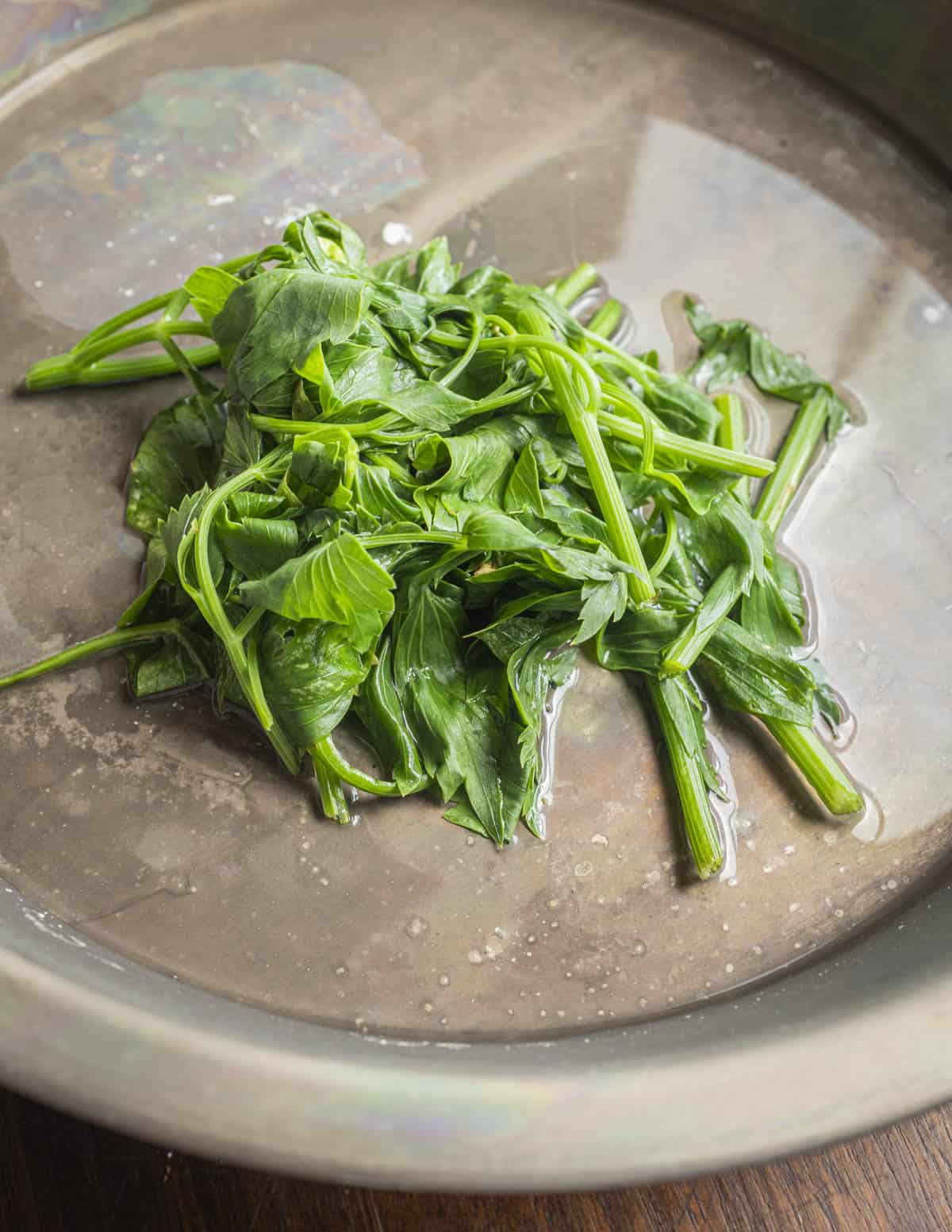
This Polish website recommends pureeing the leaves with oil and salt and pressure canning in jars for winter soups. You could also skip the mason jars and vacuum seal lovage and oil frozen in ice cube trays.
Dried Lovage
When you grow lovage you'll have a lot of it once the plant's established. Most people I know that grow the plant like to dry the leaves for using in soups. The flavor isn't quite as strong as fresh after it's dried, but it's still very good and a perfect way to use an abundance of fresh leaves. Try adding it to water when you boil potatoes.
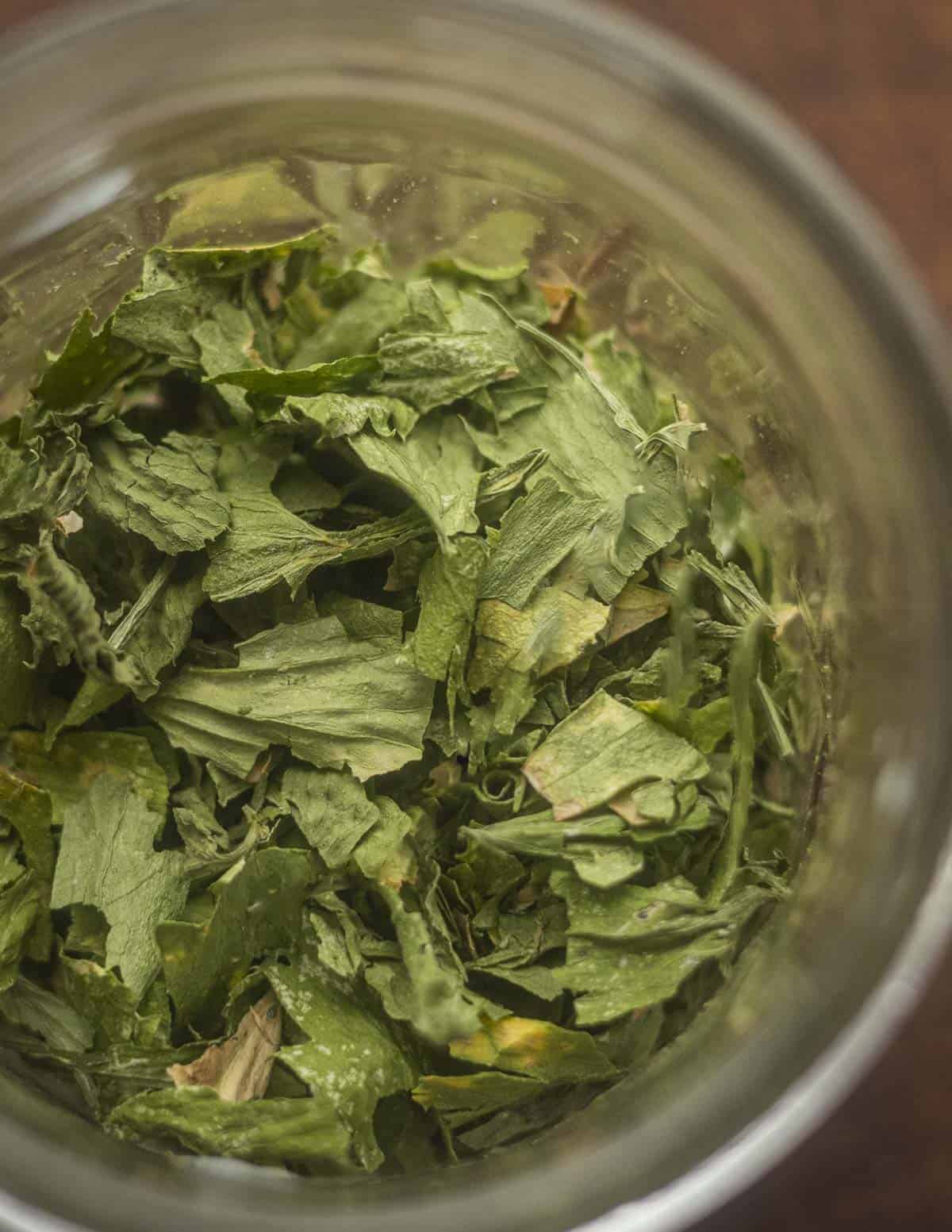
How to Use Lovage
You can use lovage anywhere an intense flavor of celery would be good. The whole plant is edible and the stems, roots, flowers, and seeds can be used for different purposes. But, the tender stems and leaves are generally what's called for in cooking. When pureed into my lovage sauce recipe it's probably my favorite condiment and has a bit of a cult following.
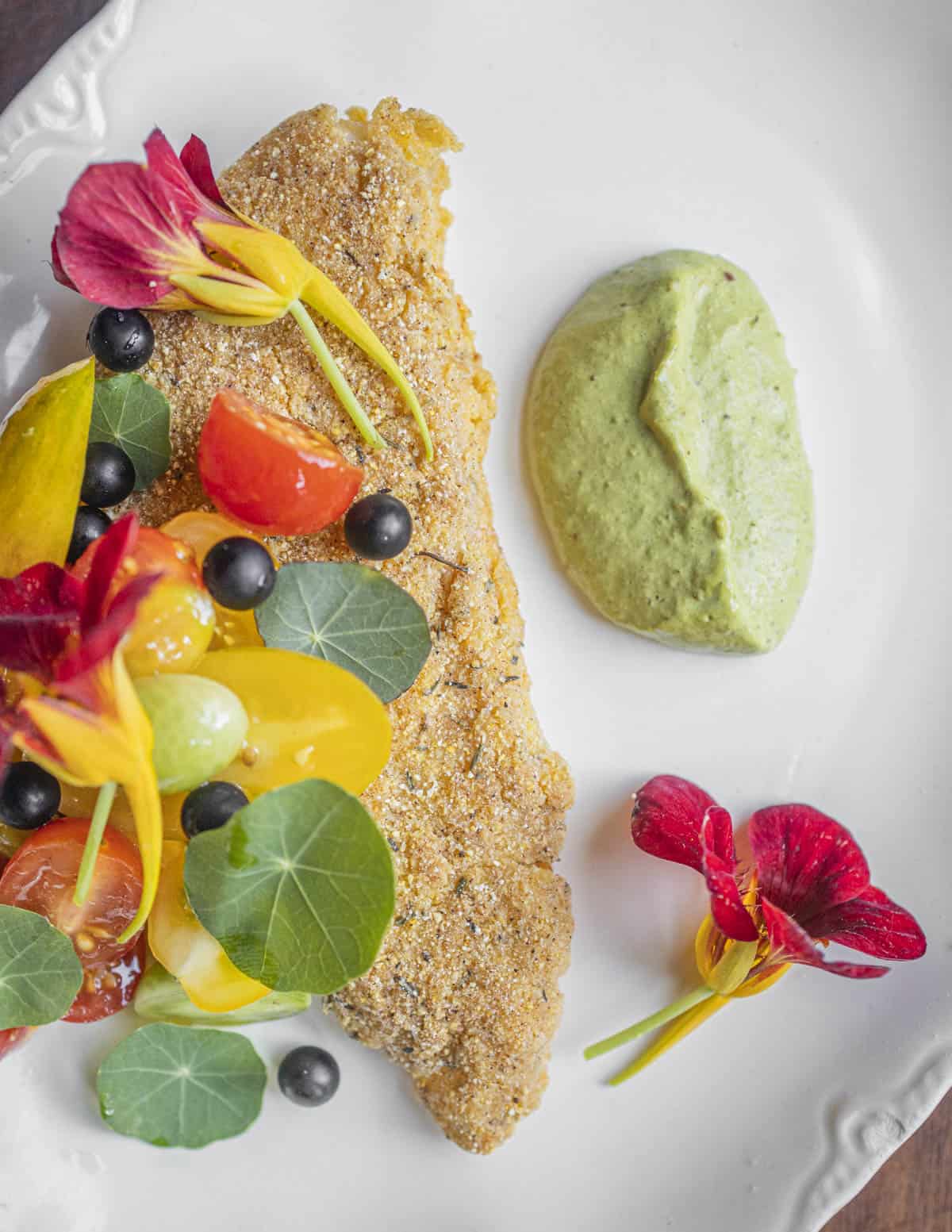
In Norway the plant is called løpstikke, and my friend (author of the Book Norwegian Baking Nevada Berg) suggested to uses it to make lovage drinks with gin.
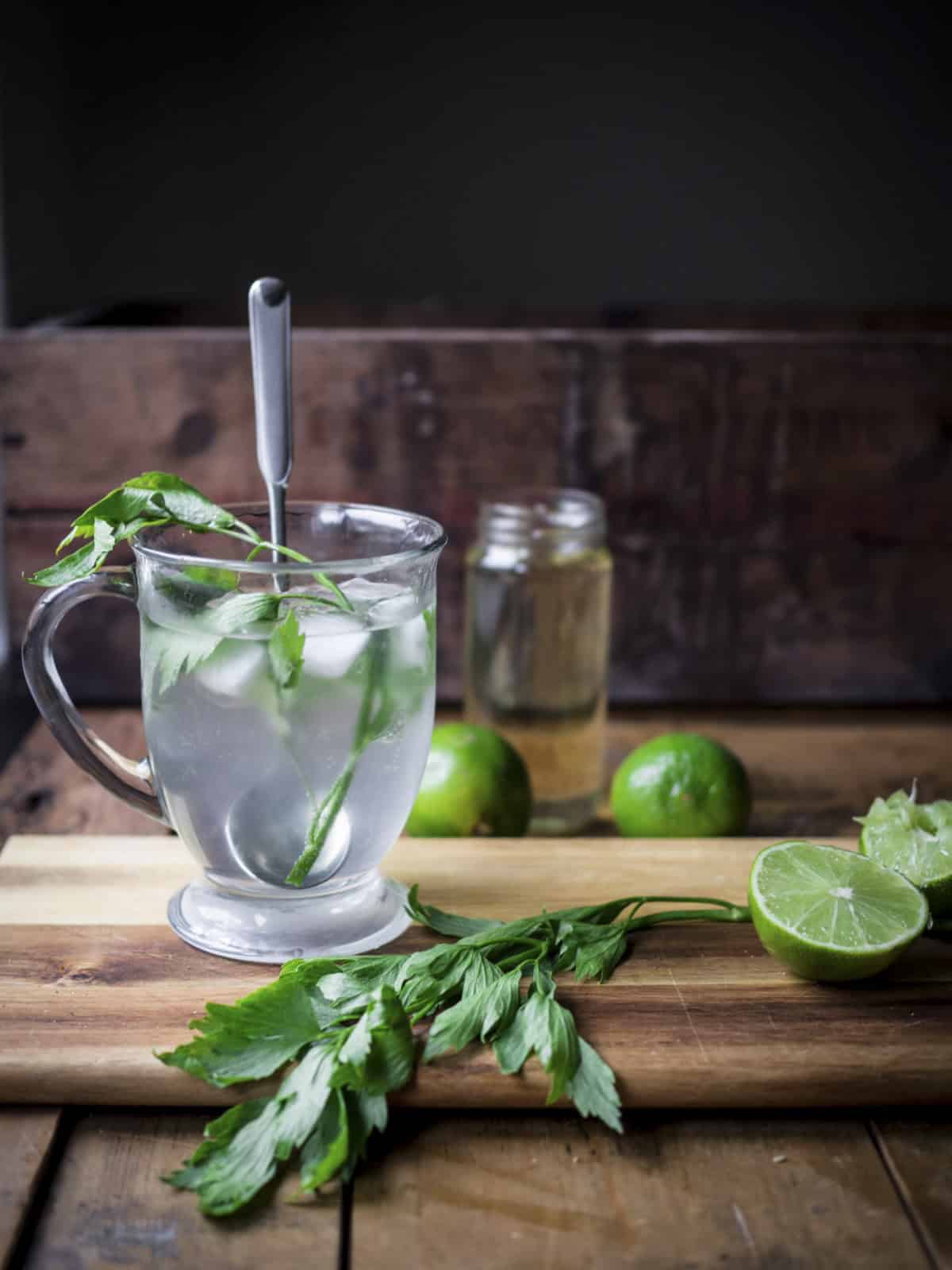
Besides the leaves, lovage stalks are edible and can be added to dishes thinly sliced when tender.
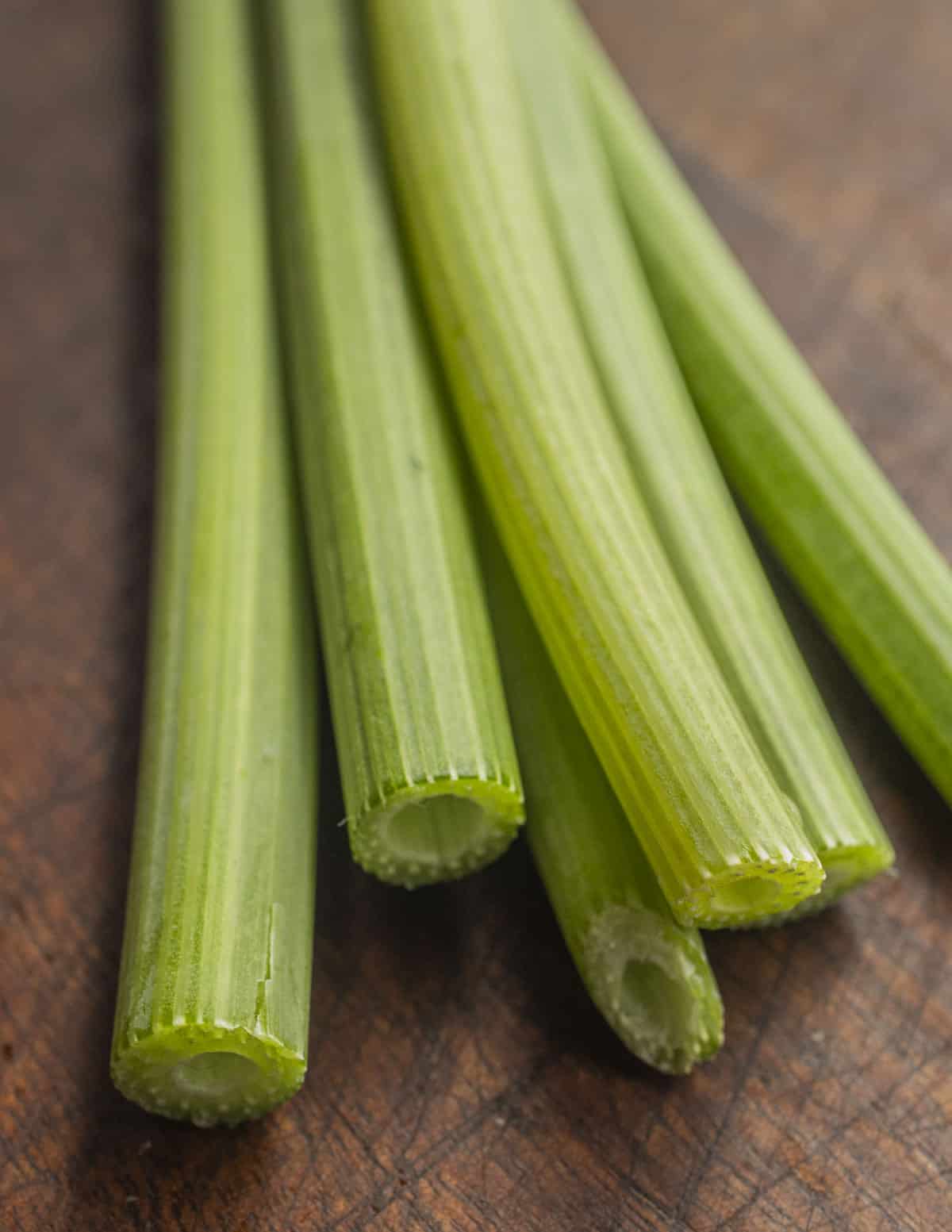
Later in the season the hollow stems make a novel straw for a bloody mary.
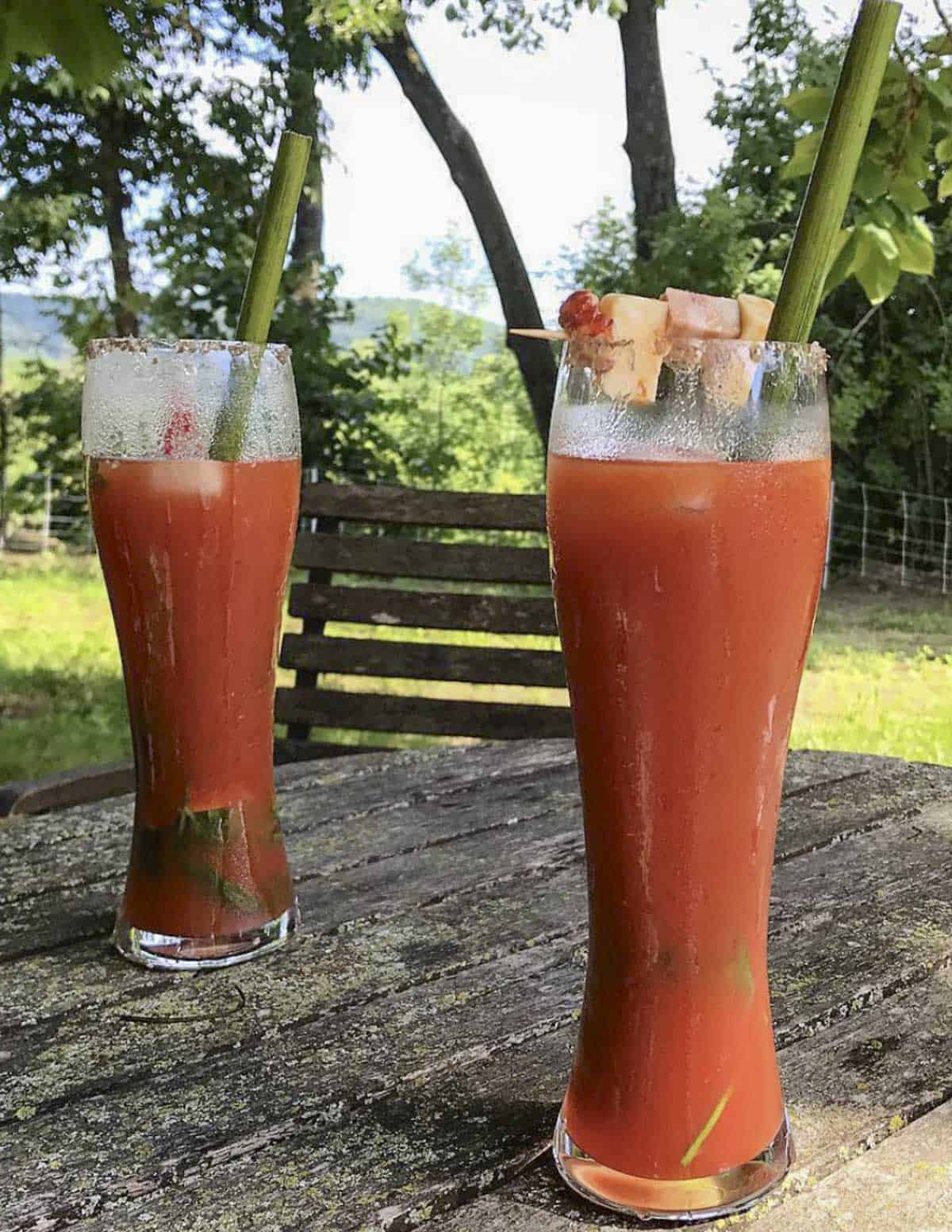
I've also heard of the stalks being candied like angelica and cooked into syrups to flavor drinks. A few people I spoke to also swear by lovage lemonade and I can confirm it's one of the more refreshing versions I've had.

Interestingly, like celery, lovage contains nitrates used to cure meat which keeps it pink after cooking, among other things. Something I found out when I mixed a puree of the greens into pork sausage pictured below.
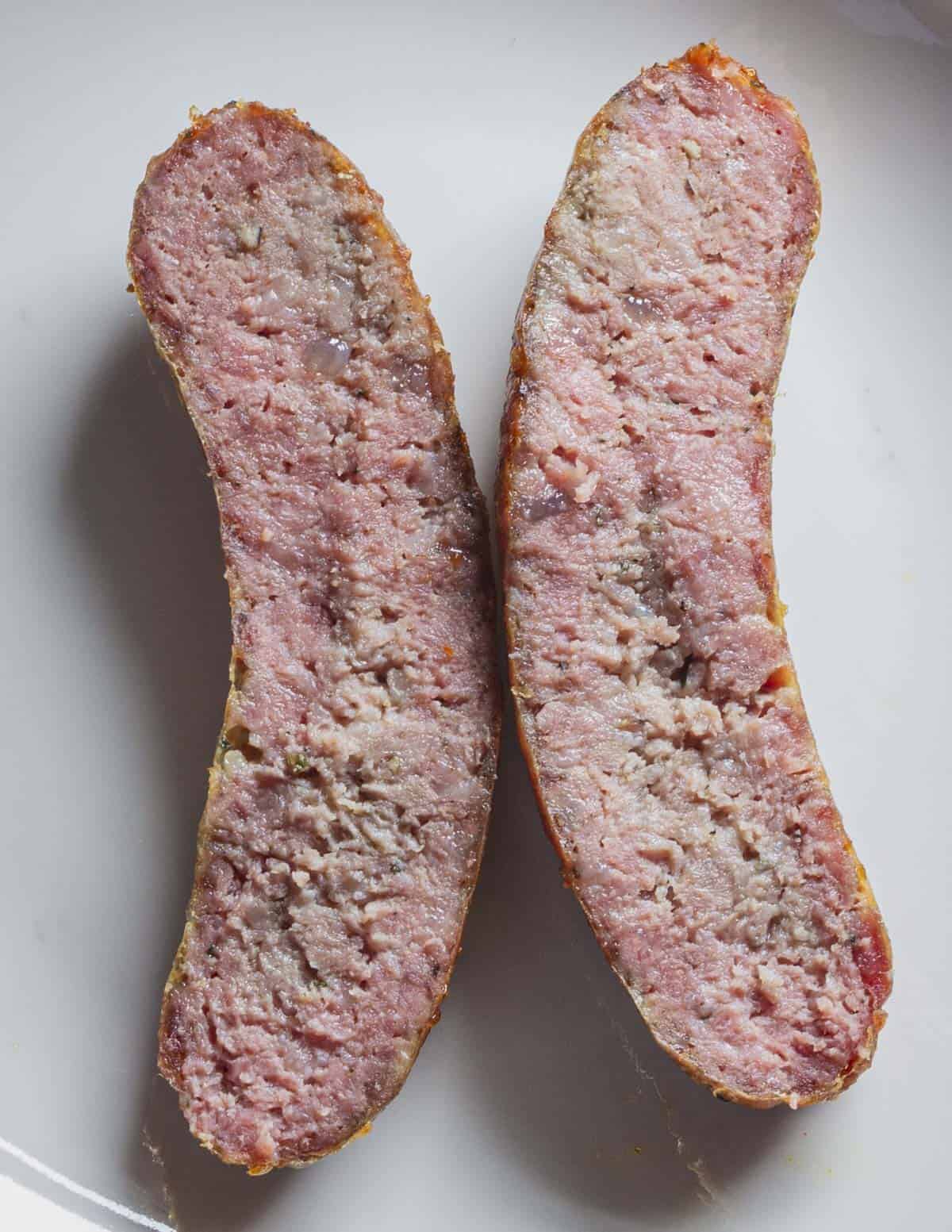
The most important thing to know about with this plant is that a little goes a long way, and adding a handful of leaves to a dish like parsley could ruin it. The leaves should be sliced or chopped in soup as you won't want to eat them whole.
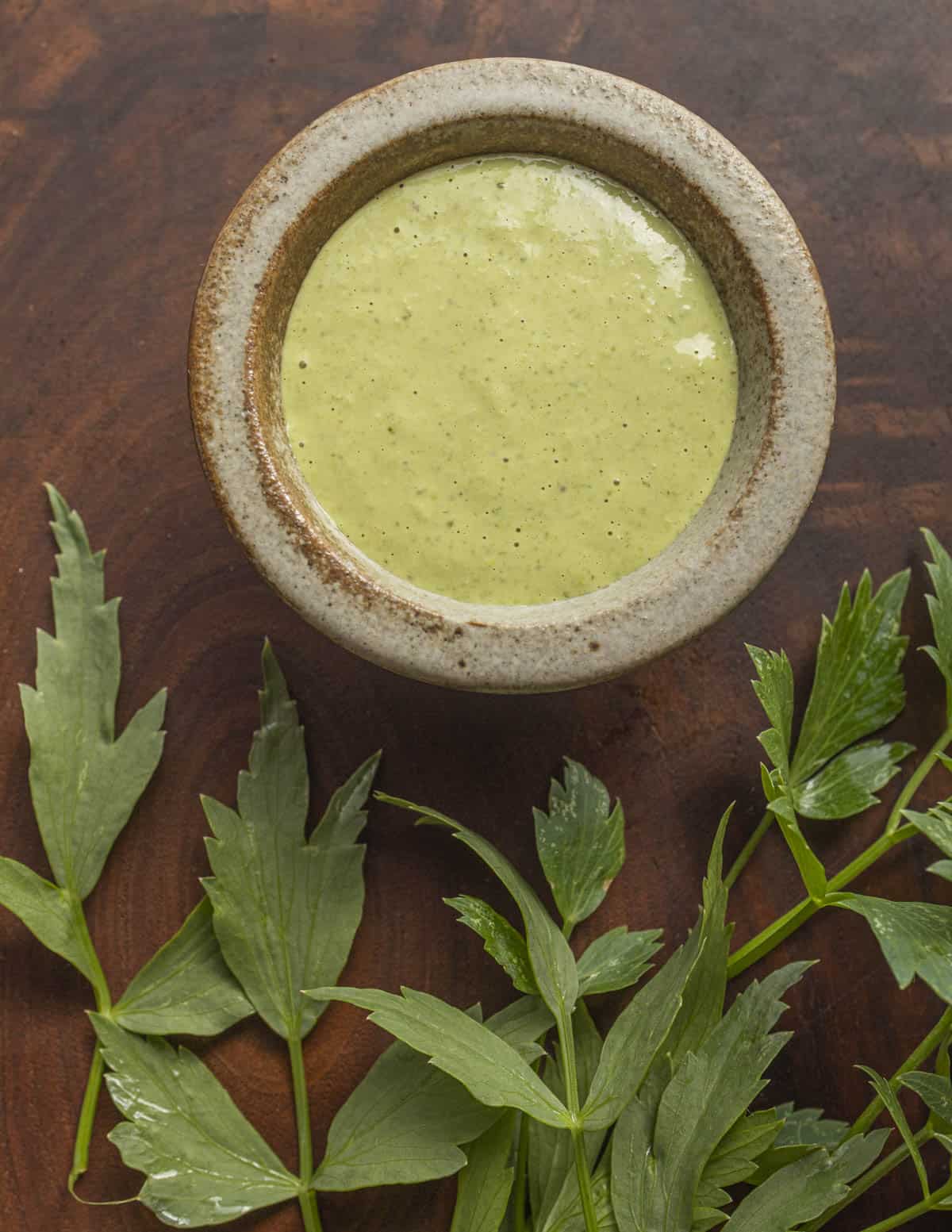
When I use it to make condiments and sauces I often blanch it first. 90% of the time I use the plant to make my lovage sauce / garlic-herb aioli, but it's good for all kinds of things. Here's a few examples:
- In Eastern Europe the fresh leaves are added to water for boiling potatoes.
- Use the fresh leaves to infuse lemonade.
- The leaves and / or seeds are excellent herbs for pickles.
- Add lovage seeds to coleslaw, ground and infused in vinegars and liquors.
- In Austria the seeds are infused into vodka and known as lustschnapps.
- Blanch the leaves and mix with cilantro for a lovage pesto.
- There's a number of people who can testify that this one of the most delicious things they've ever had. Buy the seeds and grow the plant if only to try it once.
- One of the best ways to use the plant fresh is to toss a few sliced leaves in potato or chicken soup.
- Potatoes in just about form are a perfect pairing, especially fried or roasted crisp. Many people add the fresh or dried leaves when boiling potatoes.
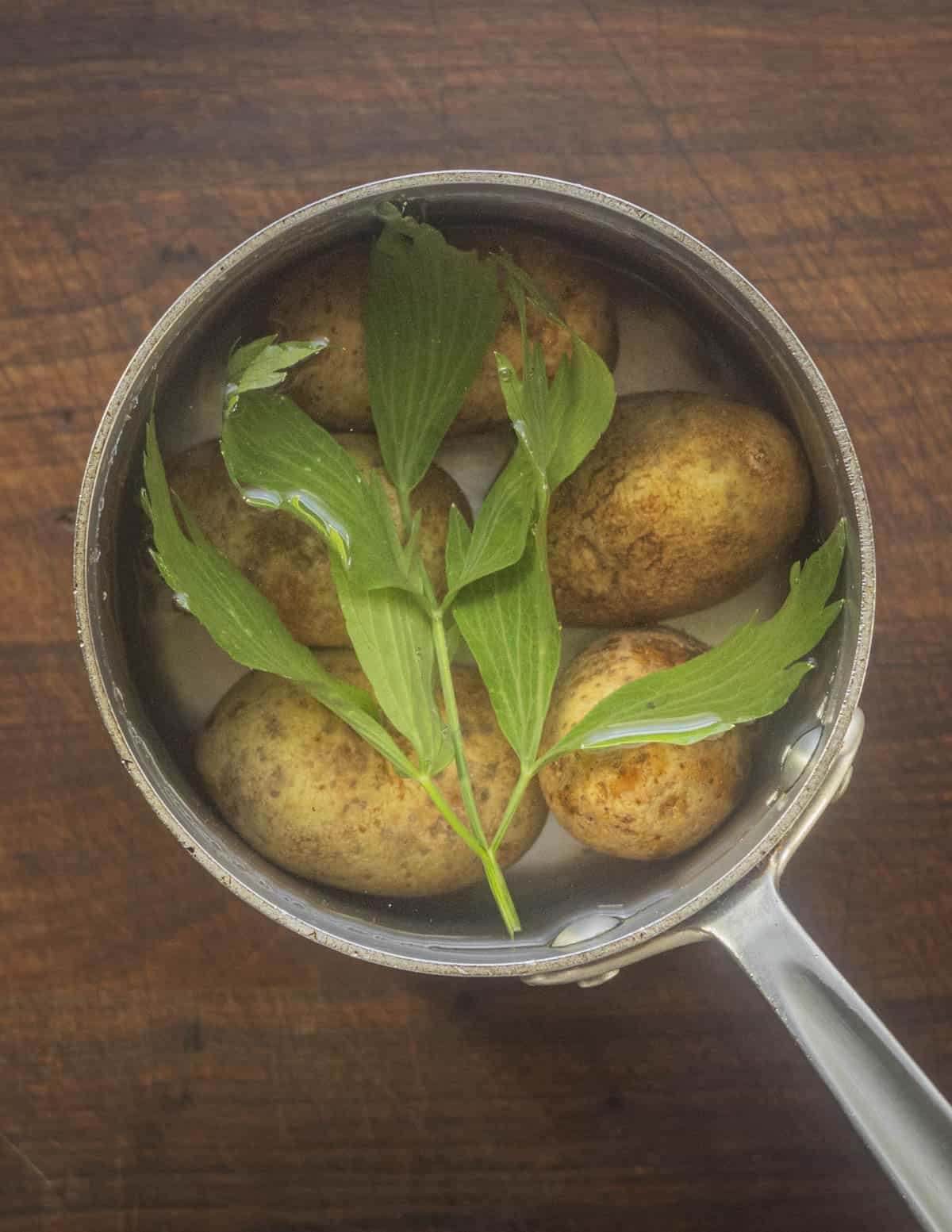
- Blanched and finely chopped it makes an exciting tartar sauce for fish and chicken.
- Infuse a few leaves in bone broth or mushroom broth and float a leaf in a mug as you sip.
- Muddle the leaves as you would mint for sweet or savory drinks.
- The leaves and stems can be added to an herb bouquet and discarded after cooking for a lighter flavor.
- I love putting a handful in Eastern European hot and sour soups, dishes with sauerkraut, as well as brothy soups like goulash/gulyas.
- The flavor works well with many Eastern European recipes. Braised meat, sausages and potatoes in a paprika broth with sauerkraut, for example.
- Mince fresh leaves with carrot, onion, celery and garlic to make a soffrito base for cooking beans, greens or soup as in the picture below.
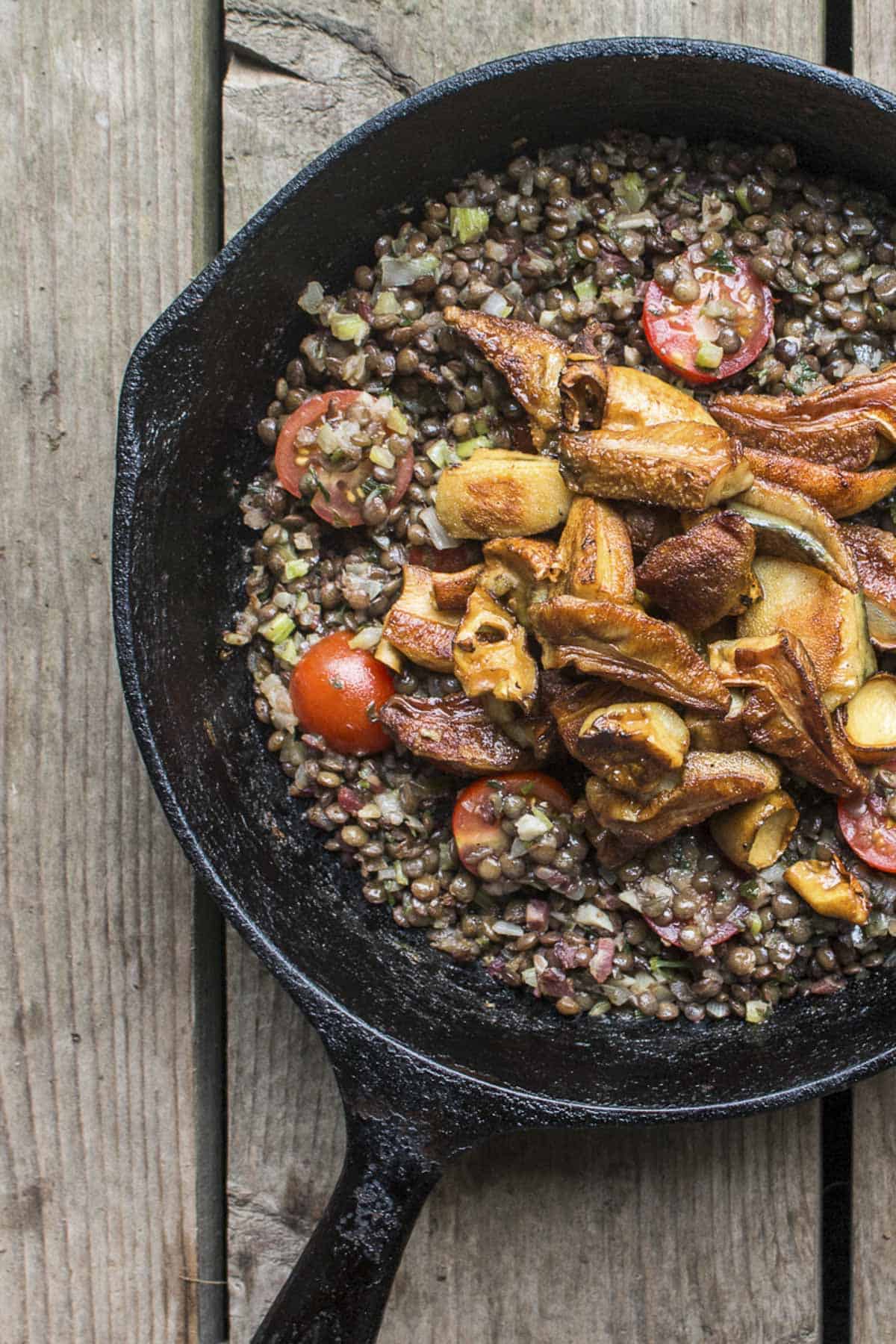
Lovage Substitutes
The internet will tell you all kinds of things, but there is basically no substitute for the potent, unique flavor of lovage. The only exception is wild Legusticum porteri (Porter's lovage).
While Porter's lovage grows wild in some places and also has a strong taste of celery, it's been overharvested in some places for it's root (osha root) and it's much easier to grow your own plants from seed. Scot's lovage (Ligusticum scoticum) used in the classic Scottish Hotch Potch stew does not taste similar.
If you find a lovage recipe you want to make but don't have any, I'd substitute Hmong cilantro (flowering cilantro) and some of the green seeds if available. Regular cilantro and culantro are good too. I'll also add that people who don't like cilantro will enjoy lovage. See the pictures below and reference my post on green coriander if you're not familiar.

Marta
Excellent article, I’m a huge fan of lovage already but am inspired by the ideas and recipes presented here
Alan Bergo
Thanks Marta.